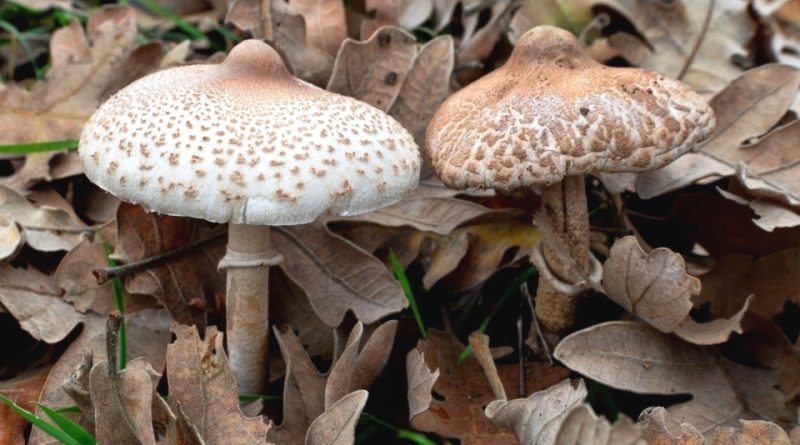Macrolepiota mastoidea
Macrolepiota mastoidea
The Slender Parasol (Macrolepiota mastoidea (Fr.) Singer, 1951) is a basidiomycete mushroom from the family Agaricaceae.
Systematic –
From the systematic point of view it belongs to the Domain Eukaryota, Kingdom Fungi, Basidiomycota Division, Class Basidiomycetes, Order Agaricales, Family Agaricaceae and then to the Genus Macrolepiota and to the Specie M. mastoidea.
The terms are synonyms: Agaricus mastoideus Fr., Syst., Agaricus umbounatus Schumach. and Lepiota excoriata sbsp. mastoidea (Fr.) Quél., Fl ..
Etymology –
The term Macrolepiota comes from the Greek μακρός macrós grande and from the genus of mushrooms Lepiota, in turn derived from the Greek λεπίς λεπίδος lepís lepídos scale and from οὖς, ωτός oús, otós ear: mushroom with the scaly hat; then a large Lepiota. The specific mastoid epithet comes from the Greek μαςτός mastόs udder and from εἶδος eidos aspect, appearance: for the umbone that resembles a nipple.
Geographic Distribution and Habitat –
The Slender Parasol is a fungus that often grows in groups in mixed forests and clearings in the autumn.
Recognition –
Macrolepiota mastoidea is quite similar to Macrolepiota procera, although it differs from the latter for its generally smaller size; it is recognized for the cap of 8-12 cm of diameter, subglobose, plane-convex, with acute umbo and involute margin; the cuticle is white or ocher-cream, dissociated in very fine scales, thicker towards the center. The lamellae are dense, tall, distant from the stem, white in color and then creamy-pink. The stem is cylindrical, attenuated at the top, slightly swollen at the base, covered with brown-yellow granular scales, easily detachable from the hat. The flesh is whitish or white, unchanging, with a faint odor and a slightly acidic flavor, intense with hazelnuts, which recalls that of Macrolepiota procera. Under the microscope there are white spores in mass, elliptic, binucleate.
Cultivation –
The Slender Parasol is an un-cultivated fungus.
Uses and Traditions –
The Macrolepiota mastoidea is a mushroom much sought after for its good taste of hazelnuts; moreover it does not require a prolonged cooking, like the similar M. procera which turns out to be toxic from raw. It is however recommended not to exchange it with Chlorophyllum rachodes (which can cause serious gastric problems even after cooking).
Preparation Mode –
Only the hat, which can be roasted on the grill or breaded and fried, is consumed from the umbonated bubbly. This mushroom, similar to Macrolepiota procera, is cooked simply by sautéing it in a pan and using it as a side dish or as a filling of delicious omelettes. Unlike the M. procera, it needs longer cooking times because it does not present the raw toxicity of the like; in any case it is always recommended to blanch the mushroom before proceeding with breading and cooking.
Guido Bissanti
Sources
– Wikipedia, the free encyclopedia.- Cetto B., 2008. The mushrooms from life, Saturnia, Trento.- Pignatti S., 1982. Flora of Italy, Edagricole, Bologna.- Conti F., Abbate G., Alessandrini A., Blasi C. (edited by), 2005. An annotated checklist of the Italian vascular flora, Palombi Editore.
Warning: Pharmaceutical applications and alimurgical uses are indicated for informational purposes only and do not in any way represent a medical prescription; there is therefore no liability for their use for curative, aesthetic or food purposes.


